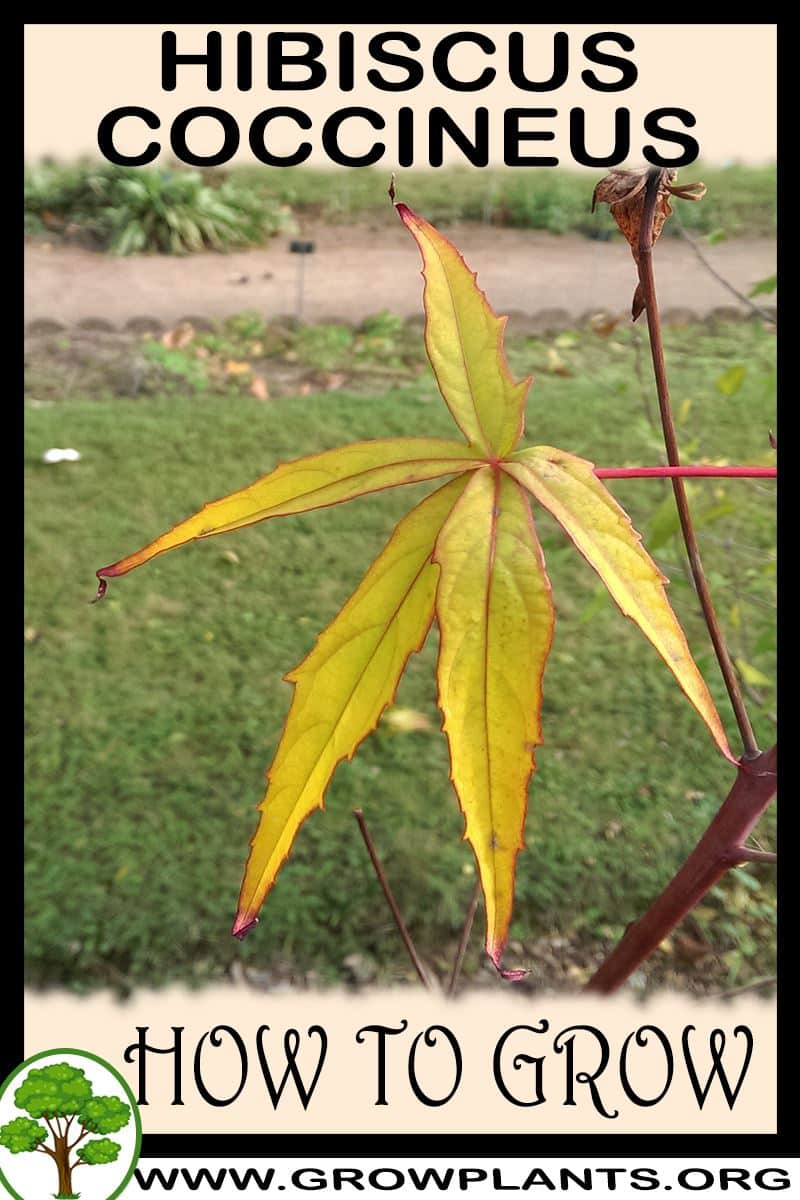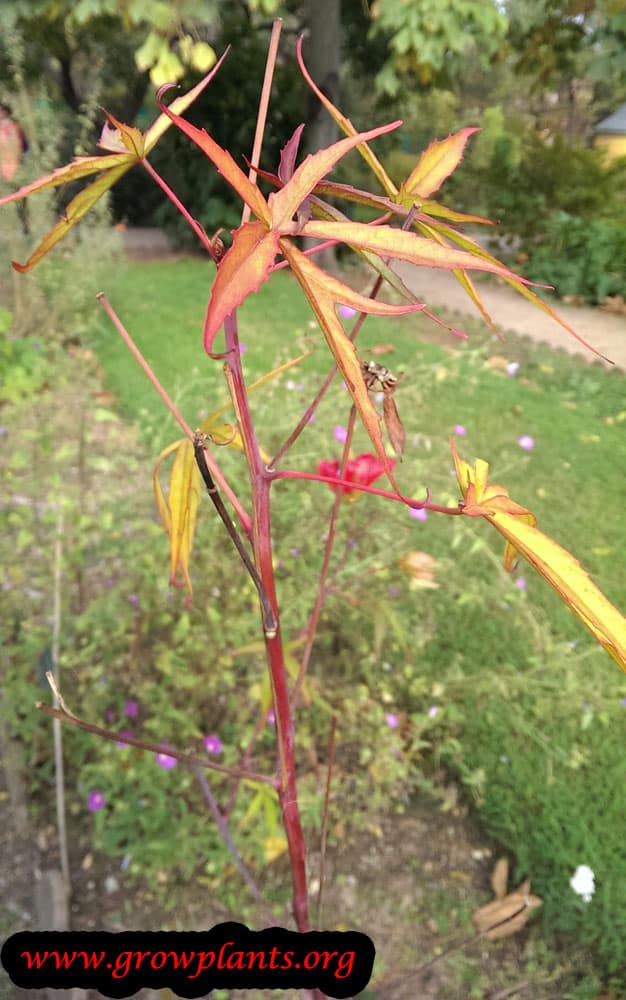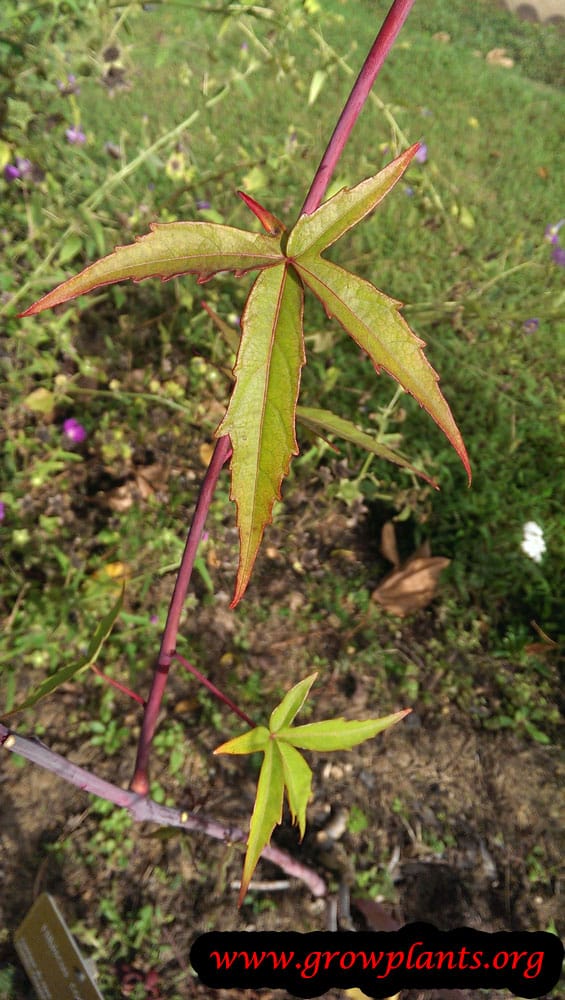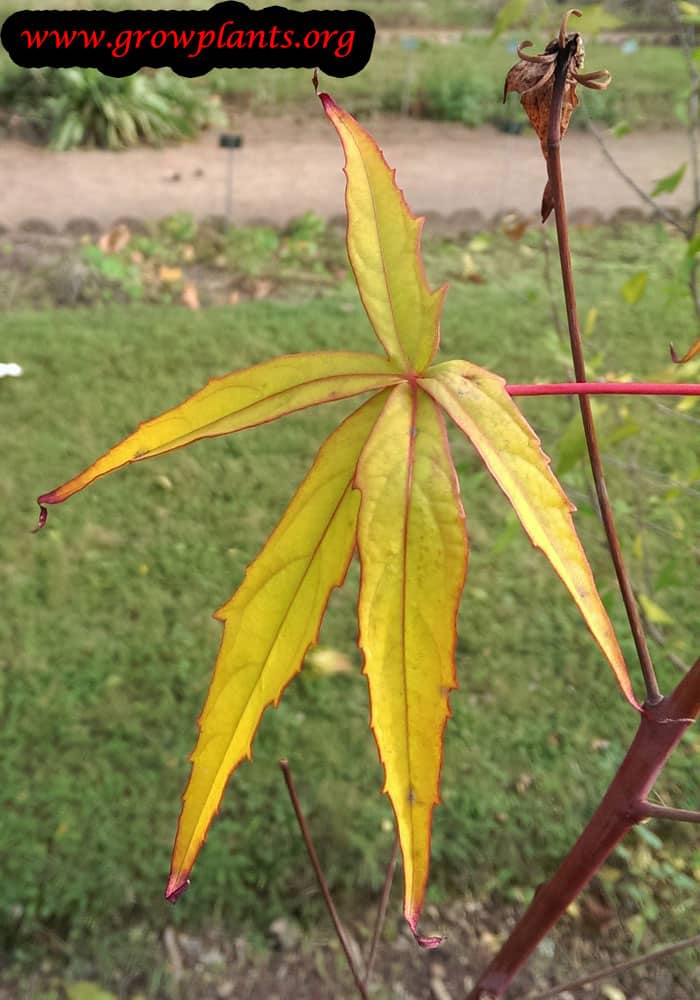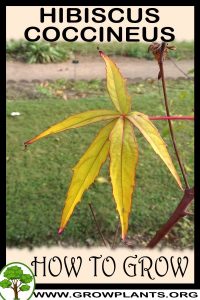
Hibiscus coccineus grow and care – shrub of the genus Hibiscus also known as Texas Star Hibiscus or Scarlet hibiscus, Hibiscus coccineus perennial evergreen plant with edible leaves but mostly as ornamental plant, can grow in subtropical, mediterranean or tropic climate and growing in hardiness zone 6-10a and with the right care in hardiness zone 10b.
Hibiscus coccineus flowers and edible leaves
Leaves color green light to dark in digitate structure (like hand with fingers) there are 5 lobes, each lobe (finger) elliptic shape.
Flower color red or white with 5 petals, the size of the flower 4-10 cm
Hibiscus coccineus for sale – Seeds or Plants to Buy
How to grow Hibiscus coccineus growing and care:
Well drained soil, rich soil, organic material
How to care:
Add fertilize at least once, put mulch to keep the soil moist, organic matter and humus, prune once a year, add water a lot of water when the temperature above 40C (104F)
What is the best way to start growing?
Plant / Seed / Vegetative Reproduction – cutting
How to propagate by cutting:
Propagating by cutting better to start in the early spring or with temperature of 15-26C (59-79F) and better before the plant start to grow after the dormant, better to choose stems that not going to bloom, requirements: moist soil, high humidity, peat soil, hormone for root growth, highly recommend to use green house (or small plastic box with holes) it will take few weeks.
Is it necessary to graft or use vegetative reproduction?
No, but with cutting ensure the color of the flower and the size of the plants, not hard to start by seeds
Difficulties or problems when growing:
Invasive, flowers burn in heat waves
Recommended planting season?
Winter, spring, simmer (in hardiness zone 10b better not in the summer and better in the winter to early spring)
How to plant:
Dig hole bigger 50% more than the roots ball, add to the hole, organic matter, dead leaves and hummus put back some soil and mix it, after this put the plant cover lightly but strong enough that won’t fall put support for the plant if needed, if the plant is not stable consider to prune, water it twice in the first day and every day for two weeks, in winter no need to put a lot of water and need to wait for the spring to put everyday water, and in the summer need to put big amount of water until the plant growing at least 5 new leaves.
Pests and diseases:
Aphids, mealy bugs
Pruning season:
End of the autumn to winter
How to prune:
Just for design, dead part and inner branches that not blooming
Size of the plant?
1-3 m, 3-10 feet
Growth speed in optimal condition:
Fast growing / Medium growing
Water requirement:
Average amount of water / Big amount of water (more water in hot days above 38C (100F)
Light conditions in optimal condition for growing:
Full Sun / Half Shade (in hardiness zone 10b and in location with a lot of days in temperature above 40C (104F)
Is it possible to grow indoor as houseplant?
No
Growing is also possible in pots, planter, flowerpot or containers:
Yes, when growing in pot need 50% bigger than the roots ball, every time that switch the container to bigger switch some of the soil to new soil until arrive to the desirable container size, after that every few years better to switch part of the soil and cut some roots, no need to take the plant out just from the side of the container, can grow in container of 10-20L (2-4 gallons) can grow in bigger, soil can be potting soil, mixture of peat soil and perlite or other light mixed soil, water it regularly and care when put bottom for the pot be aware not to let the water stay there too many days, need to add humus, organic matter, fertilizer and mulch to cover the soil to keep it moist.
Blooming information
Bloom season:
Spring / Summer / Autumn
General information about the flower
Red flower with 5 petals, the size of the flower 4-10 cm
Pollination is done by:
Bees, flies
Uses of Hibiscus coccineus leaves:
Beverage
Edible leaves
Leaves harvesting season:
All year
How to harvest the leaves?
After the plant establish
Information about leaves:
Green leaves light to dark in digitate structure (like hand with fingers) there are 5 lobes, each lobe (finger) elliptic shape.
Uses of Hibiscus coccineus leaves:
Cooked, raw
How to grow Hibiscus coccineus from seeds
Sowing requirement:
Moist soil, 20-26C (68-80F), humidity, full sun or half sun (if there are heat wave in the spring)
Saving seeds and care until sowing:
Dry and dark location in refrigerator
Sowing season:
Spring / Summer / Autumn (more important the temperature)
How to plant:
Plant in soil that stay moist and don’t let the soil dry
Planting spacing:
3*5cm to transplant and better not to transplant it before 5 leaves, direct 1*1m (40*40 inches)
Depth of Sowing:
0.5-1cm (0.25-0.5 inch) but cover lightly and don’t push
Conditions for seeds germinate:
Full sun, moist soil
Watering requires for Seeds:
Average amount of water / Big amount of water
Germination time:
10-20 days
Condition of seedling:
After five leaves possible to add fertilizer
Do the seeds require burying?
Yes
Chilling hour’s requirements:
At least one month of cold temperature, better to keep it with peat soil in cold temperatures
Scientific name:
Hibiscus coccineus
Alternative names: Hibiscus coccinea, Hibiscus biseptus
Categories
| Blooming Seasons |
|
|---|---|
| Edible Parts |
|
| Culinary uses |
|
| Flower colors |
|
| Climate |
|
| Harvest Season |
|
| Ornamental parts |
|
| Plant growing speed |
|
| Plant life-form |
|
| Plant Uses |
|
| Planting Season |
|
| Plants sun exposure |
|
| Watering plants |
|
| Hardiness zone |
|


